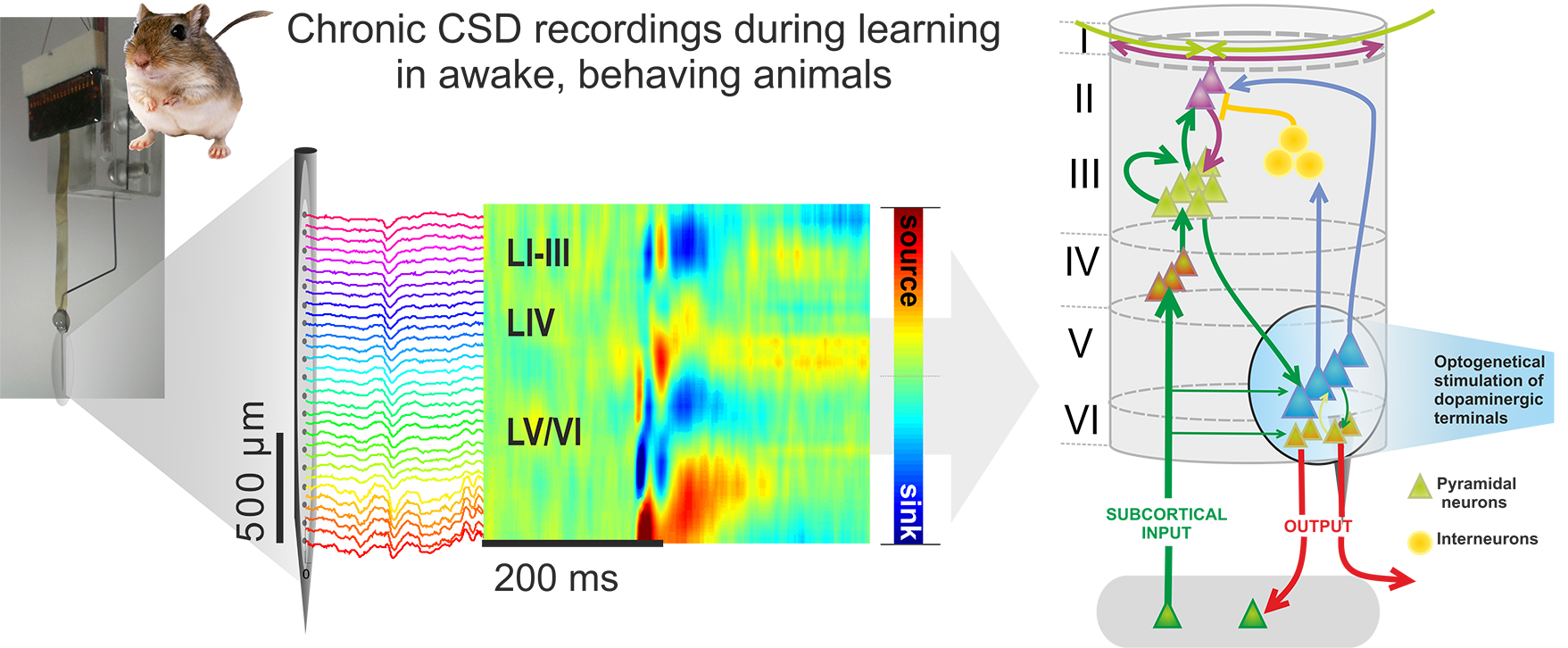WP 1: Happel
Dr. Max F.K. Happel (LIN, Department Systems physiology of learning)
Dopamine impact on reorganization of laminar cortical circuitry function during learning
Contact

The project investigates the impact of dopaminergic neurotransmission on learning-related reorganization in cortical circuits of audition. It has been evidenced by several studies, that sensory cortical dopamine controls both the selection of perceptually or semantically salient signals as well as feedback processing from higher-order areas in the brain which then allow the selected sensory information to be integrated within a behavioral context. However, we only started to understand the functional mechanisms underlying the integration of sensory and non-sensory cognitive and behavioral variables.
In the current project, we will therefore combine state-of-the-art multichannel recording techniques and laminar current-source-density analysis with a trial-by-trial modulation of dopaminergic transmission tailored by optogenetical tools in the awake, behaving Mongolian gerbil. With this technique, we will investigate how dopamine differentially affects local, intracolumnar circuits and more global corticocortical circuits during sensory processing of behaviorally relevant signals. Particularly, we will elucidate the behavioral role of a recently described corticoefferent feedback gain circuitry originating in infragranular layers of auditory cortex (Happel et al., 2014; J Neurosci). By applying different task designs, as for instance reversal learning, we will further interfere with dopamine signaling during phases where re-associations of previously reward-based choices of auditory stimuli are required (Happel et al., 2014b; PNAS).
In collaboration with project WP 2 (Dr. Michael Lippert), we will gain a deeper understanding of local and global sensory cortical circuit processing modes that incorporate already learned associations and behaviorally relevant processing of new stimuli that then built on previously established behaviors to implement updated context-dependent individual behavioral choices.

